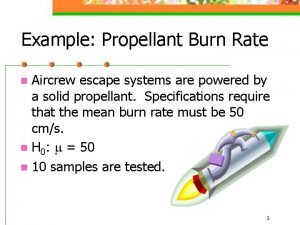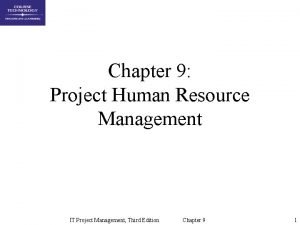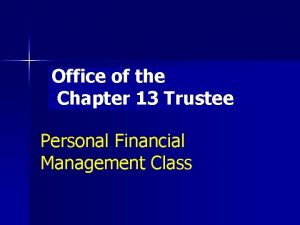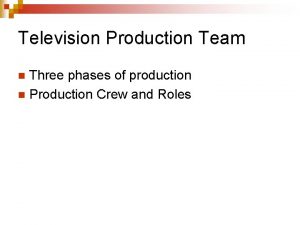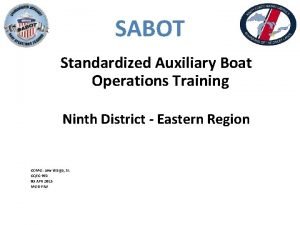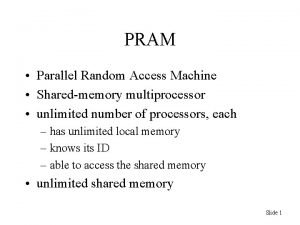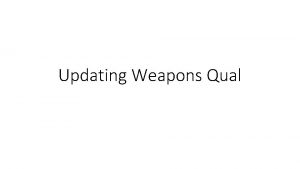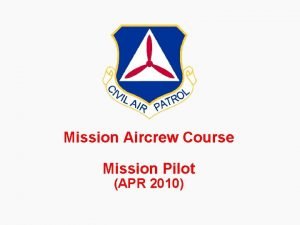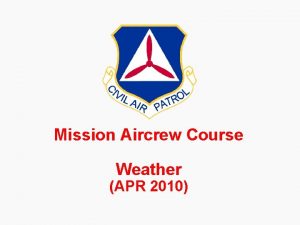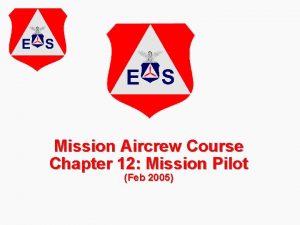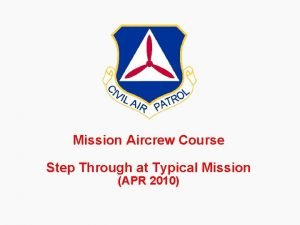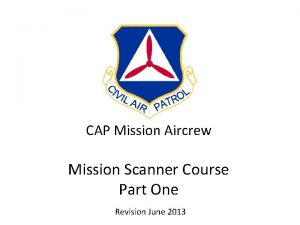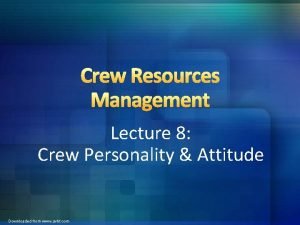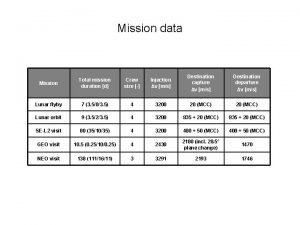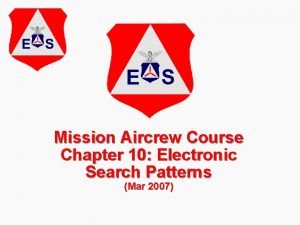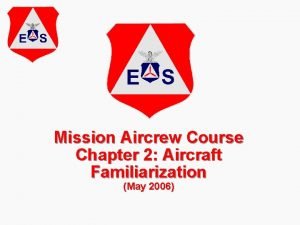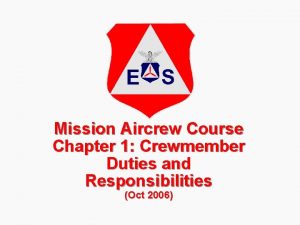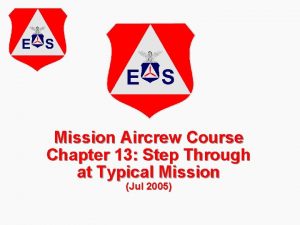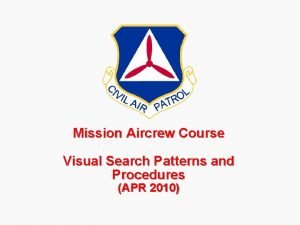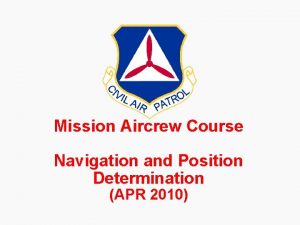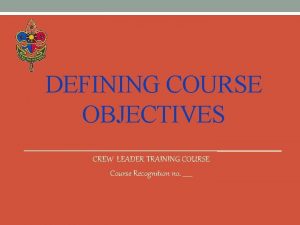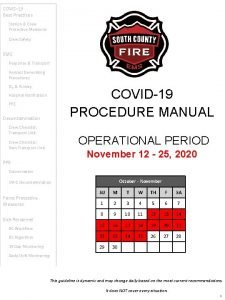Mission Aircrew Course Chapter 14 Crew Resources Management


























- Slides: 26

Mission Aircrew Course Chapter 14: Crew Resources Management (Feb 2005)

Aircrew Tasks m P-2028 DISCUSS CREW RESOURCE MANAGEMENT (S, P)

Objectives m Discuss the fundamentals of Crew Resource Management (CRM) m Discuss failures and error chain. {O; 14. 2} m Discuss situational awareness. {O; 14. 3} m Discuss how to regain SA once lost. {14. 4} m Describe barriers to communications. {O; 14. 5} m Define/discuss task saturation. {O; 14. 6} m Discuss assignments and coordination of duties. {O; 14. 8}

Why CRM? m Properly trained aircrew members can collectively perform complex tasks better and make more accurate decisions than the single best performer on the team m An untrained team's overall performance can be significantly worse than the performance of its weakest single member m We will cover behavior and attitudes of teamwork and communication among team members

Why CRM? m CAP 1996 m Aircraft accidents 9 m Per 100, 000 hours 7. 79 m A/C flight incidents 28 m A/C ground incidents 7 m Fatalities 7 1997 5 4. 16 27 8 2 1998 6 4. 76 19 3 3 1999 3 2. 34 12 6 2 2000 1 0. 94 16 8 0

Why CRM? m MISHAP m Taxi m Ground m Landing m Other 1998 9 4 8 4 1999 4 6 8 3 2000 9 3 10 2

Failures m. Parts and equipment. • Mechanical failures m. People. • Human failures

The Error Chain m. A series of event links that, when considered together, cause a mishap m. Should any one of the links be “broken, ” then the mishap probably will not occur m. It is up to each crewmember to recognize a link and break the error chain

Situational Awareness (SA) m. Know what is going on around you at all times m. Requires: • • Good mental health Good physical health Attentiveness Inquisitiveness

Loss of SA m Strength of an Idea Hidden agenda m Complacency m Accommodation m Sudden Loss of Judgement m

Symptoms of Loss of SA Fixation m Ambiguity m Complacency m Euphoria m Confusion m Distraction m Overload m

Hazardous Attitudes m. Anti-authority Impulsiveness m Invulnerability m Macho m Resignation m Get There It-us m

Regaining SA Reduce workload: Suspend the mission. m Reduce threats: m • Get away from the ground and other obstacles (e. g. , climb to a safe altitude). • Establish a stable flight profile where you can safely analyze the situation. m Remember: “Aviate, Navigate, Communicate”

How do we get it back? Trust your gut feelings m “Time Out, ” “Abort, ” or “This is Stupid. ” m • Pilot establishes aircraft in a safe and stable configuration, and then discuss the problem m Sterile Cockpit • Limit talk to the minimum necessary for safety. • Taxi, takeoff, departure, low-level flying, approach, landing

QUESTIONS?

Barriers to Communication m Hearing • The biological function of receiving sounds, converting them to electrical impulses, and having the brain interpret them m Listening • Correctly identifying what the sender has sent in their message


Barriers to Communication m Distracters • Physical/Mental: Noise, static, simultaneous transmissions; fatigue and stress • Wording: Incomplete or ambiguous message, too complex or uses unfamiliar terminology • Personal: Boring, lack of rapport or lack of credibility

Task Saturation Too much information at one time m Too many tasks to accomplish in a given time m Usually occurs when an individual is confronted with a new or unexpected situation and loses SA m

Task Saturation Keep your workload to an acceptable level m If you feel overwhelmed, tell the others before becoming saturated and losing you situational awareness m Watch your team members for signs of saturation m

Identification of Resources m External and internal Identify your resources, know where to find them, and how to use them to accomplish the mission m

Assignment of Duties CAPR 60 -3 m Flight-related -- aircraft commander m Mission-related -- mission commander m

Crew Coordination Understand execute your assignments m Communicate m Question m

Summary m Pay close attention to all briefings m Understand the “big picture” m Watch for task overload in yourself and other crewmembers m 67% of air transport accidents occur during 17% of the flight time - taxi, takeoff, departure, approach and landing. Keep casual conversation and distractions to a minimum during these phases of flight. m Begin critical communications with instructions, then explain

Summary m m m m Successful missions hinge on each and every crewmember Learn how to use the procedures and tools available to you, and use them correctly Never stop learning Don’t be afraid to ask questions Never criticize someone for asking questions Anyone can call “Time Out, ” “Abort, ” or “This is Stupid” Remember that the Mission Pilot must make the final decision based on the crew’s input.

Questions?
 Aircrew escape systems are powered by a solid propellant
Aircrew escape systems are powered by a solid propellant Cabin crew training course in malaysia
Cabin crew training course in malaysia Apollo ship management pte ltd
Apollo ship management pte ltd Im safe checklist
Im safe checklist Transformation process
Transformation process Fixed and variable resources examples
Fixed and variable resources examples Renewable vs nonrenewable resources worksheet
Renewable vs nonrenewable resources worksheet One and half brick wall
One and half brick wall Course number and title
Course number and title Course interne course externe
Course interne course externe Chapter 9 human resource management
Chapter 9 human resource management Human resource management chapter 1
Human resource management chapter 1 Chapter 9 human resources management
Chapter 9 human resources management Chapter 13 personal financial management course
Chapter 13 personal financial management course Thecrewmethod
Thecrewmethod S-230 crew boss quizlet
S-230 crew boss quizlet Television production crew
Television production crew Piw crew
Piw crew Multiprocessor
Multiprocessor Pops bridge
Pops bridge Film production hierarchy
Film production hierarchy Commercial crew and cargo program
Commercial crew and cargo program Crew cut x ray
Crew cut x ray Umpirer
Umpirer M4 weapons qual card
M4 weapons qual card Sunexpress info
Sunexpress info Pittsford crew
Pittsford crew
